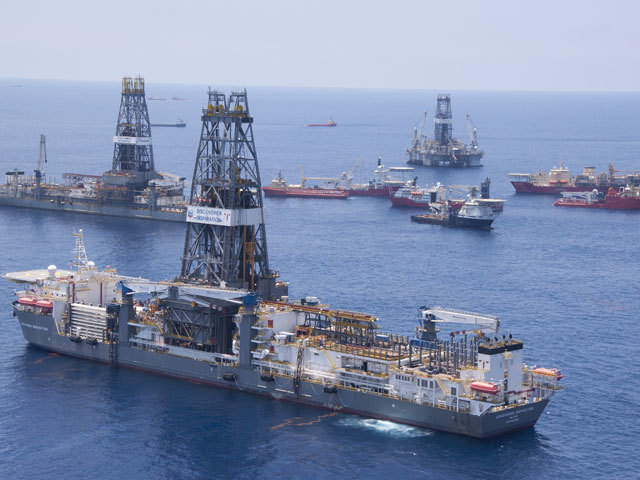
In May, Transocean revealed a plan to hive off its eight North Sea midwater rigs into a spin-off company to be called Caledonia Offshore Drilling to be based in Aberdeen..
The offshore drilling assets scheduled to move across to Caledonia included the Sedco 704, Sedco 711, Sedco 712, Sedco 714, Transocean John Shaw, Transocean Prospect, GSF Arctic III and JW McLean.
While the company has pressed ahead with creating the subsidiary, plans for full separation have been sunk by the slump in oil prices and the impact of that on its performance.
Indeed, offshore rig rates are expected to sink further over the next few quarters as oil companies shy away from costly exploration and postpone expensive new field developments. GSF Arctic III is a casualty of this slump as it is out of work and likely to be cold-stacked in the Cromarty Firth.
The corporation said it will not for the time being pursue a private placement of Caledonia shares, given the current market conditions.
“(The placement) would have provided the company with another source of liquidity to address its upcoming debt maturities,” Barclays analyst Harry Mateer said in a note.
Transocean will, however, report Caledonia as a standalone entity from the current quarter and maintain the option to pursue a divestiture later.
“The company will continue to assess the competitiveness of non-core assets on a case-by-case basis,” Transocean’s CEO Steven Newman said on a conference call.
Transocean’s latest figures for Q3 ending September 30 make grim reading. It recorded impairment charges of $2.62billion, and a net loss of $2.22billion, compared with a profit of $546million for Q3 last year.
The Switzerland-based but still quintessentially American drilling contractor is taking a non-cash charge of $1.97billion related to impairment of goodwill and an asset impairment charge against its Deepwater Rig asset group of $788million “due to the deterioration of the market outlook, reflecting the recent decline in dayrates and utilisation for this particular asset class”.
According to its October fleet status report covering 29 ultra-deepwater and 12 deepwater rigs, Transocean’s total out-of-service days for the ultra-deepwater cohort totalled an estimated 296 days in Q3.
They are expected to be out of service for 435 days in the current quarter.
The 12 deepwater rigs logged a total of 87 out-of-service days in Q3 and 43 days is the Q4 forecast.
The estimated average contract dayrate for the 29 ultra-deepwater rigs in Q3 was $555,000, dropping to $549,000 in Q4, and an anticipated $539,000 in Q3 next year.
The estimated dayrate for the 12 deepwater rigs rises slightly from $376,000 for Q3 to $380,000 in Q4, then dropping to $378,000 for Q3 next year.
Orders in place
Meanwhile, Transocean has orders in place for seven additional drillships, four of which are scheduled to go to work for Shell while one is signed up with Chevron.
Two of the vessels due to go to Shell are diaried for delivery in the first half of 2016, with the Chevron-contracted unit due out in Q4 the same year.
The other two vessels signed to go to work for Shell are currently scheduled for the first half of 2017.
Wall Street Market newsletter Barron’s notes from Transocean’s latest fleet report that Deepwater Discovery, Sedco Express and the GSF Arctic III are all now idle.
Barron’s warns: “We had been modelling that the Deepwater Discovery would see a 60-day gap in between contracts in West Africa. But now that Transocean has removed the rig’s scheduled survey from its 2015 guidance we are forecasting that the rig will be off rate for the entire first half of 2015.
“Similarly, with the Sedco Express we were calling for the rig to work half of Q4’14 with ENI in Nigeria before rolling on to a new contract at roughly $350,000 per day. We now expect the rig will likely be idle for the first half of 2015 given that Transocean has removed plans for the rig’s five-year survey.
Indeed there are several more Transocean rigs coming off contract this month and next, unless they are renewed at lower rates.
They appear to include the Deepwater Champion, Deepwater Frontier, Deepwater Expedition, GSF Explorer, Sedco 707 and GSF Celtic Sea.
Transocean has signalled too that a number of its older rigs may be weeded out, presumably through scrapping. See Drill Bits, page 29.
Meanwhile, though the corporation failed to get Caledonia away in the way that had been expected, Noble successfully went through a major rationalisation of its fleet earlier this year by spinning its older drilling units out into a new company, Paragon Offshore.
Until the spin-off, Noble had a fleet of 77 offshore units (including one ultra-deepwater drillship and three high-specification jack-ups currently under construction).
Following completion of the separation of Paragon, Noble was left with a fleet of 35 rigs comprising 20 semi-submersibles and drillships and 15 jack-ups focused largely on ultra-deepwater and high-specification jack-up drilling opportunities in both established and emerging regions worldwide.
Paragon’s fleet now comprise 42 standard specification rigs and includes 34 jack-ups and eight floaters (five drillships and three semi-submersibles).
They include units presently working in the North Sea.
Recommended for you
